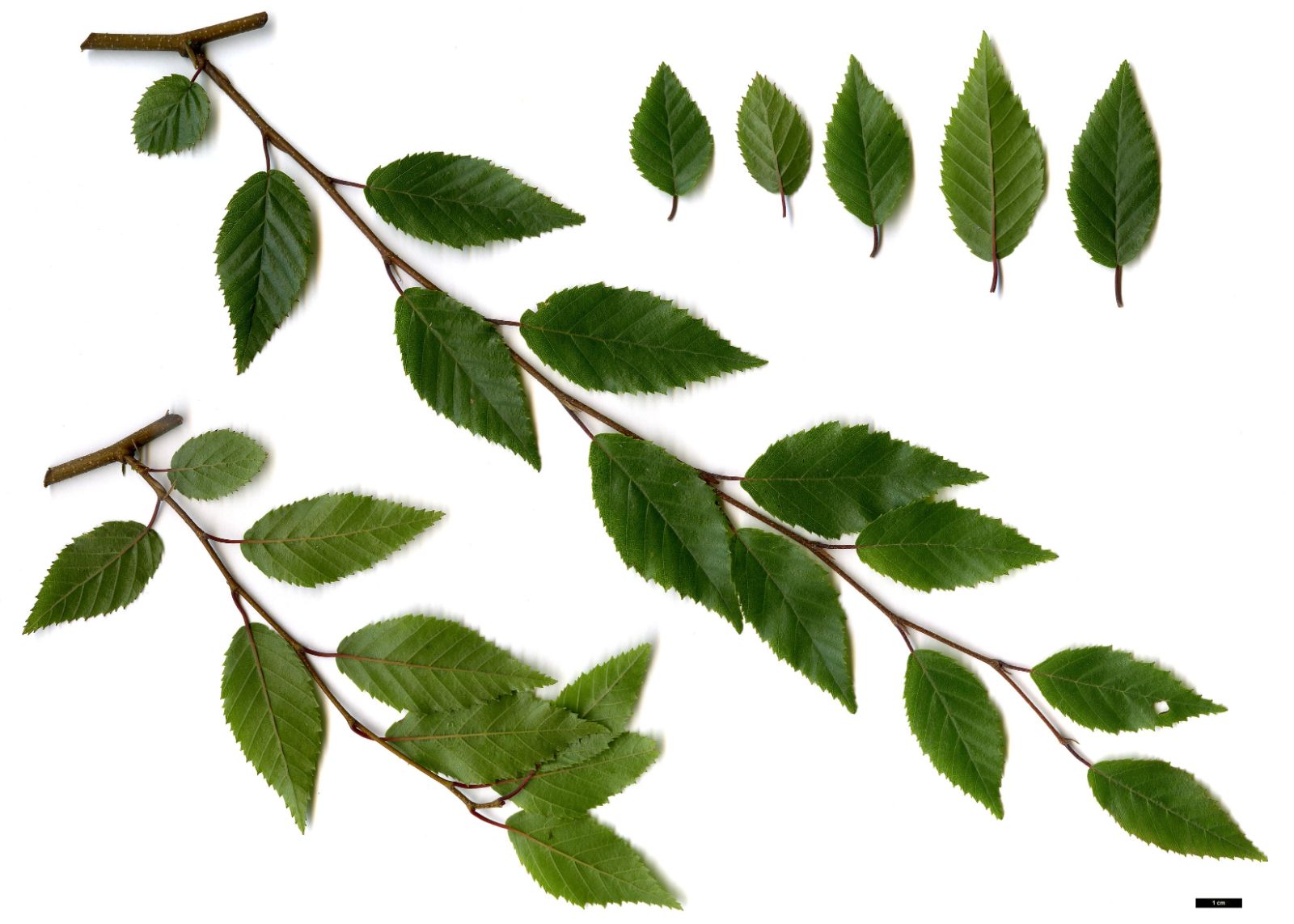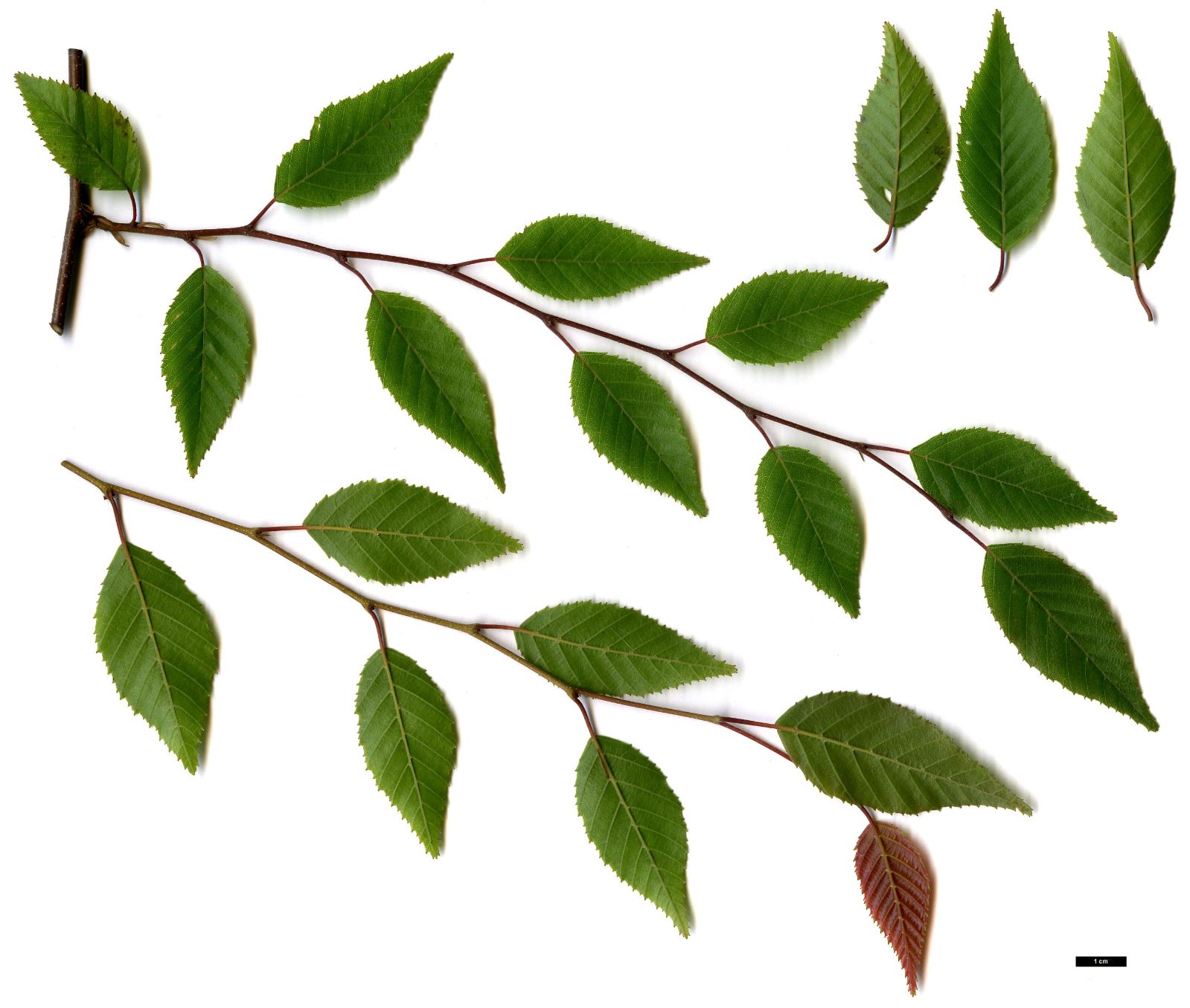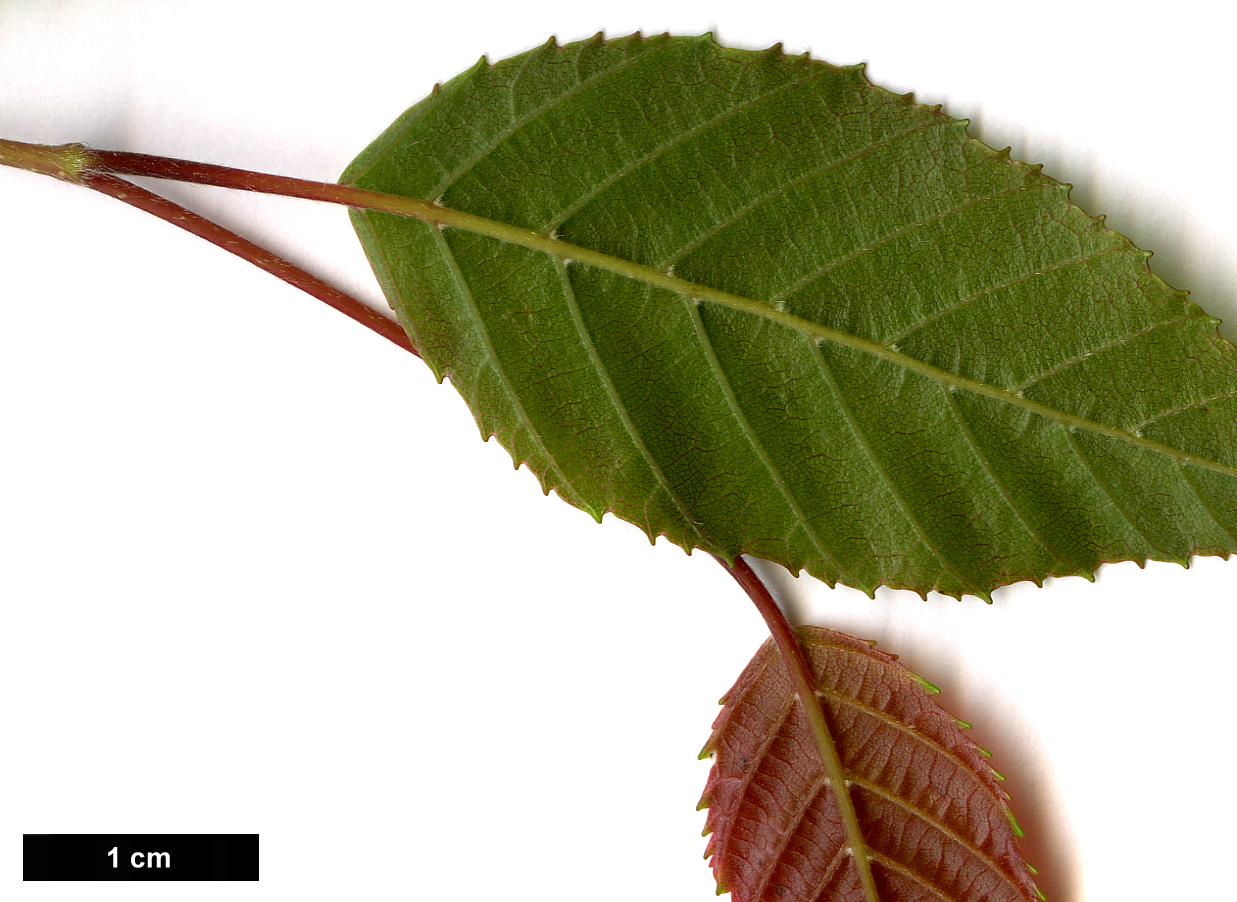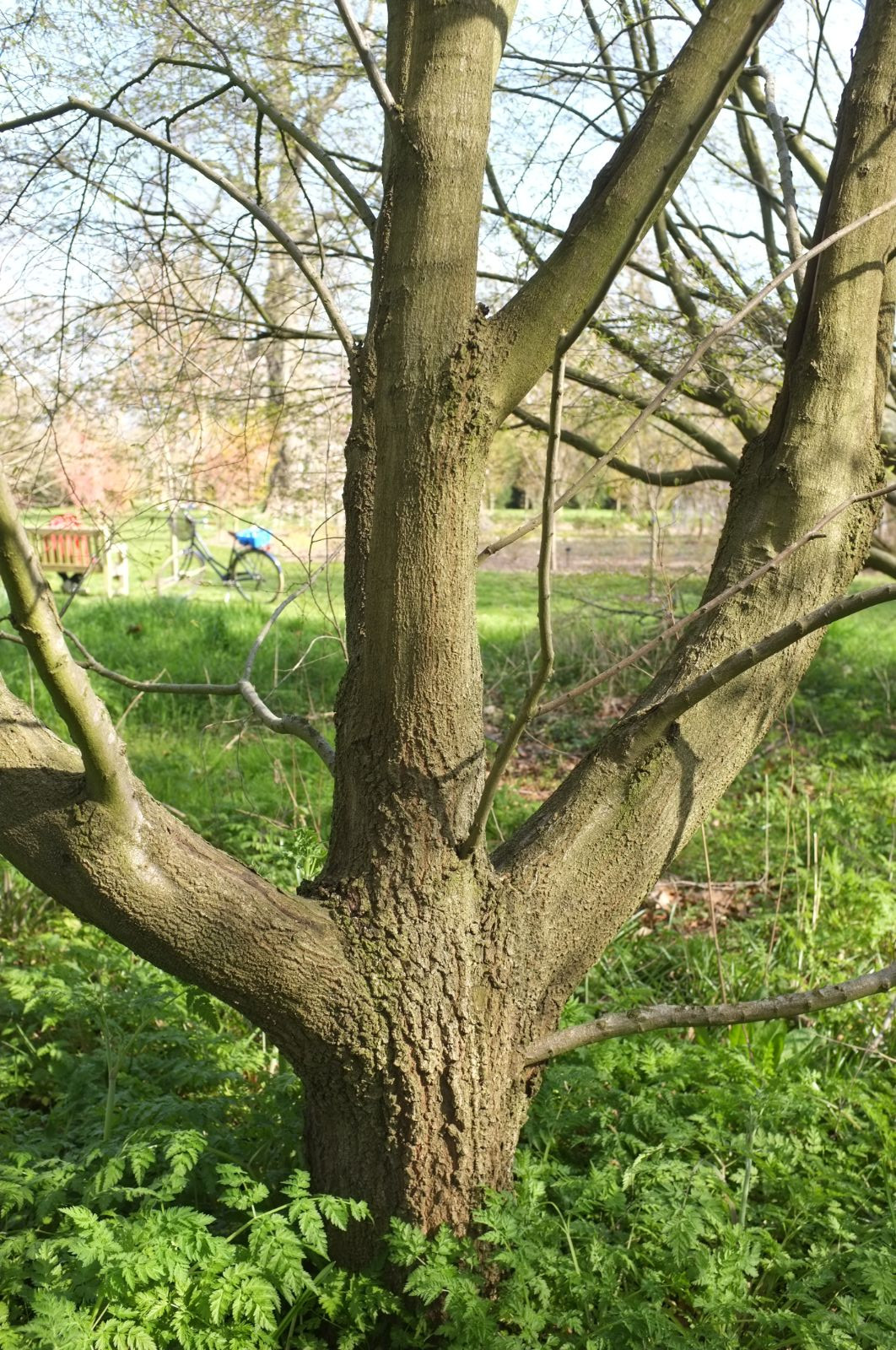Carpinus kawakamii
Sponsor
Kindly sponsored by
Lord and Lady Aldington
Credits
Owen Johnson (2022)
Recommended citation
Johnson, O. (2022), 'Carpinus kawakamii' from the website Trees and Shrubs Online (treesandshrubsonline.
Genus
Other taxa in genus
- Carpinus betulus
- Carpinus caroliniana
- Carpinus cordata
- Carpinus faginea
- Carpinus fangiana
- Carpinus fargesiana
- Carpinus hebestroma
- Carpinus henryana
- Carpinus japonica
- Carpinus laxiflora
- Carpinus londoniana
- Carpinus mollicoma
- Carpinus monbeigiana
- Carpinus omeiensis
- Carpinus orientalis
- Carpinus polyneura
- Carpinus pubescens
- Carpinus rankanensis
- Carpinus × schuschaensis
- Carpinus shensiensis
- Carpinus tropicalis
- Carpinus tschonoskii
- Carpinus turczaninovii
- Carpinus viminea
Tree to 9 m. Bark dark grey, roughly fissured with age. Twigs brown, glabrous to slightly pubescent. Leaves narrowly ovate to lanceolate, 4–5 × 1.8–2.5 cm; base rounded to subcordate (sometimes unequally), apex rather long-pointed, glabrescent; dark green above, flushing bronze to purple; lateral veins in 10–15 pairs, not impressed or markedly close or parallel; margin regularly double-serrate or sometimes single-serrate; petiole sparsely pubescent, 8–15 mm. Fruiting catkin 4–6 cm long, with a densely pubescent c.1 cm peduncle; bract narrowly D-shaped, 18–20 × 5 mm, the straight side entire but with a 3 mm auricle at the base clasping the nutlet, curved side irregularly and coarsely dentate; nutlet with some resinous glands, densely hairy at the tip. (Li & Skvortsov 1999).
Distribution China Fujian (Liancheng Xian) Taiwan Alishan
Habitat Glades in forests and limestone crags, 500–2000 m asl.
USDA Hardiness Zone 7-8
RHS Hardiness Rating H4
Conservation status Least concern (LC)
Although described in 1913 – the name commemorates the Japanese botanist Takiya Kawakami – Carpinus kawakamii did not reach the west until much later in the century (Rushforth 1985). An example at Kew was 3.5 m tall in 1975, but along with other early introductions this has long gone (Tree Register 2022). This is not one of the hardiest hornbeams, but plants from various seed consignments since ETE 156 in 1993 have thrived, and the species is now well represented in England’s large gardens. The leaves are among the smallest and slenderest in the genus and make for a particularly elegant plant; although this is described as only a small tree in the wild, one planted in 2000 in the shelter of the hornbeam collection at Kew was already 11 m tall by 2022 (Tree Register 2022) and looked as if it would grow much bigger; in open situations, however, specimens can remain bushy. Carpinus kawakamii is most likely to be confused with the Taiwanese endemic C. hebestroma, which has smaller, shorter fruit-bracts and which is of much more recent introduction to Europe. The bark can be unusually rugged for a ‘true hornbeam’s’, with rather oak-like ridges.
As is the case with many hornbeams from low latitudes but high altitudes, the red or purplish anthocyanins in the young leaves are this species’ most colourful feature; in juvenile plants at least, the colour can sometimes persist on the leaf’s underside (International Dendrological Foundation 2022). A young tree from CWJ 12449, planted by the author in his local public park, Alexandra Park in East Sussex, is tardily deciduous, like the ones at Kew, but examples in more Atlantic conditions and from at least some introductions are evergreen (Burncoose Nurseries 2022) and may not stop growing at all (Williams 2020). In the even less seasonal climate of Brisbane, Australia, by contrast, young plants are described as turning yellow in autumn (JAC Orchids 2022).
This hornbeam’s hardiness may not yet have been fully tested. It has survived in the Royal Botanic Garden Edinburgh since 2007 (Royal Botanic Garden Edinburgh 2022), and was planted at the J.C. Raulston Arboretum in North Carolina in 2017 (J.C. Raulston Arboretum 2022); this is in USDA hardiness zone 7b-8a, but the long warm growing season may benefit this southerly species.
In the milder climate of the Sonoma Botanical Garden in California, Carpinus kawakamii has been grown since 1993, in the form of a high-altitude collection from 1860 m (Grimshaw & Bayton 2009). It is also represented at the Christchurch Botanic Gardens in New Zealand (Golik 2017).
Another hornbeam from the mountains of Taiwan was described by Bunzō Hayata in 1913 as C. minutiserrata, and is accepted by Holstein and Weigend (Holstein & Weigend 2017) and by Plants of the World Online (Plants of the World Online 2022) as a variety of C. kawakamii (var. minutiserrata (Hayata) S.S. Ying, a combination not made until 1988). It is distinguishable by its longer leaves (6–11 cm long) with more lateral vein pairs (15–17), a distinctive fine double serration, and its shorter fruiting catkins (3–4 cm) with shorter, broader fruit-bracts (13–14 × 6–7 mm) (Li & Skvortsov 1999). This taxon is probably not in cultivation in the west (Beech, Shaw & Jones 2015).





